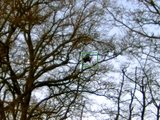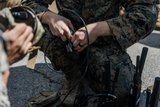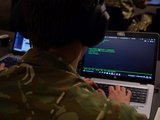Boeing delivers F-22 Raptor training simulators
Boeing has announced that it has delivered two F-22 Raptor training simulators with a 360-degree immersive visual environment to the US Air Force.
The two simulators were paired with the Constant Resolution Visual System (CRVS) and installed at US Air Force locations. The CRVS is a patented display that provides high-resolution imagery for pilots to train with nearly 20/20 acuity.
Col. Anthony Genatempo of the air force said: 'Boeing has delivered what are probably the most advanced high definition flight simulators I have experienced, and they are going to let our pilots realise training unlike any they’ve had before. That translates directly into mission readiness.'
This latest F-22 mission training centre delivery is the fourth of five mission training centres ordered by the air force. The fifth will be installed this year. Boeing will upgrade the previously delivered F-22 mission training centres with the CRVS as well.
The F-22 mission training centres also include instructional courseware, software and brief/debrief stations where student pilots can review recordings and data with an instructor.
More from Digital Battlespace
-
![EID to unveil new vehicle communication system at DSEI]()
EID to unveil new vehicle communication system at DSEI
The Portuguese company’s naval communications system is in service across more than a dozen countries. It has turned to its home nation for support in developing a new vehicle based C2 system.
-
![Chess Dynamics successfully demonstrates Vision4ce AI-driven tracker]()
Chess Dynamics successfully demonstrates Vision4ce AI-driven tracker
The Vision4ce Deep Embedded Feature Tracking (DEFT) technology software is designed to process video and images by blending traditional computer vision with artificial intelligence (AI) algorithms to present actionable information from complex environments.
-
![Wave Relay devices cleared for security use on commercial systems in industry trend]()
Wave Relay devices cleared for security use on commercial systems in industry trend
Persistent Systems has been cleared by National Security Agency (NSA) to transmit sensitive data on commercial networks. The devices are added to the NSA’s Commercial Solutions for Classified (CSfC) component list which also includes other companies’ products providing the same security.
-
![UK teases cyber spending boost in Strategic Defence Review ahead of “imminent” release]()
UK teases cyber spending boost in Strategic Defence Review ahead of “imminent” release
The release of the UK’s Strategic Defence Review (SDR) has been long promised as mid-year. It is possible it could be as early as 2 June although the UK Ministry of Defence (MoD) continues to play its cards close to its chest.
-
![Intelsat emphasises SATCOM resilience for SOF in contested domains (video)]()
Intelsat emphasises SATCOM resilience for SOF in contested domains (video)
Intelsat outlines how its multi-orbit SATCOM architecture is enhancing connectivity and resilience for special operations forces operating in degraded and contested environments.
-
![US Space Force’s next-generation missile warning system moves forward with $500 million in new contracts]()
US Space Force’s next-generation missile warning system moves forward with $500 million in new contracts
Next-Generation Overhead Persistent Infrared (Next-Gen OPIR) satellites are intended to provide early warning of missile launches from any location worldwide and new ground stations will result in expanded coverage of critical missile warning.
























